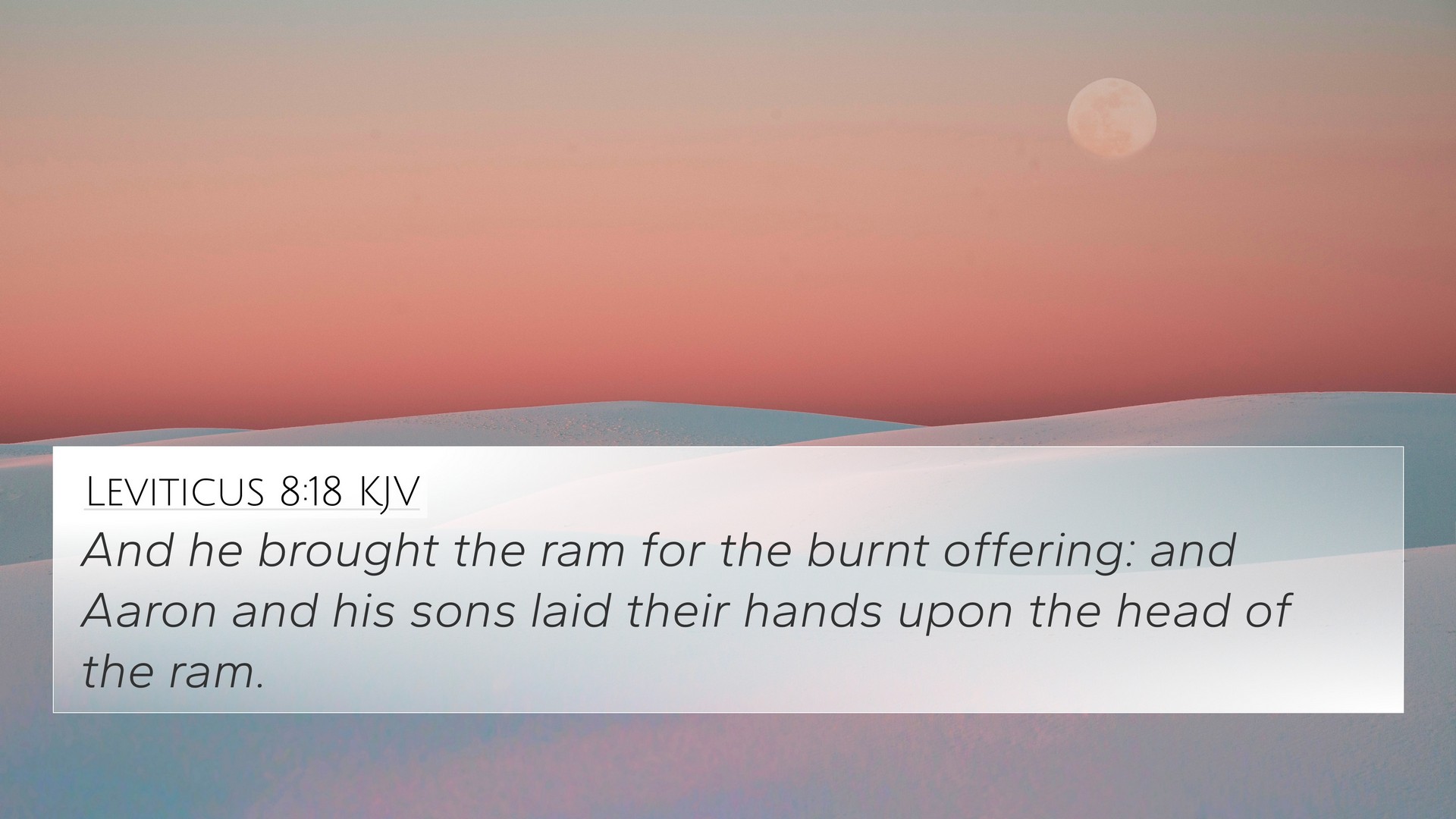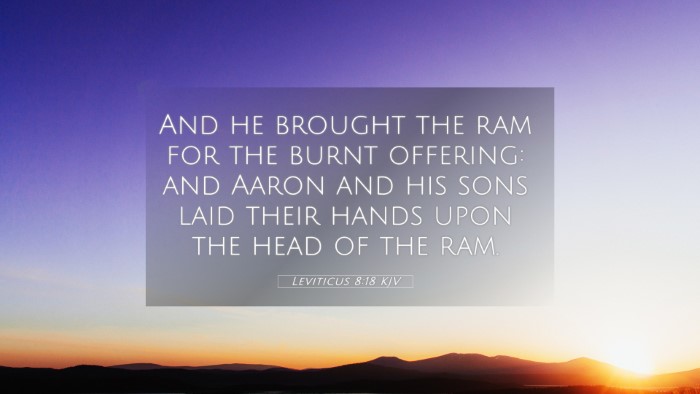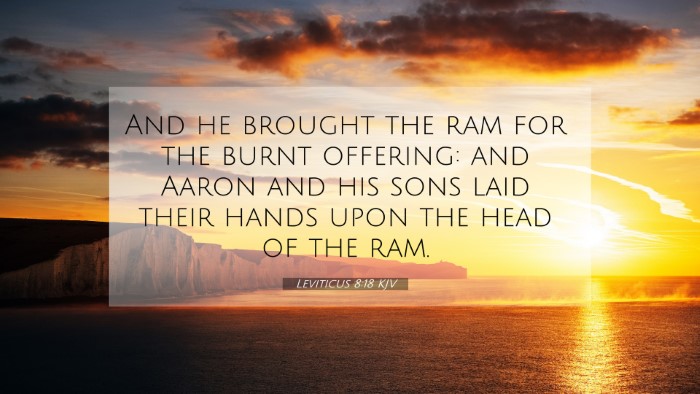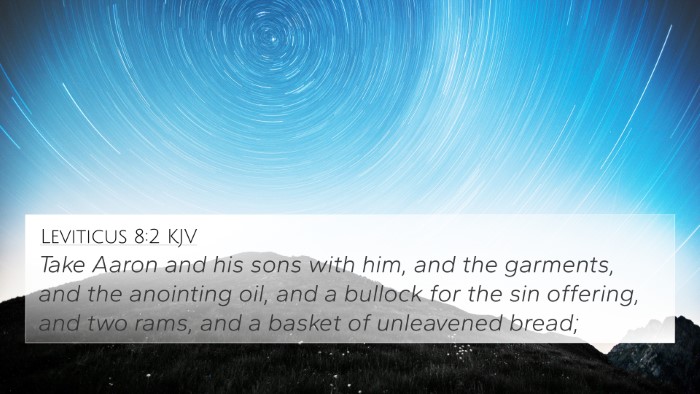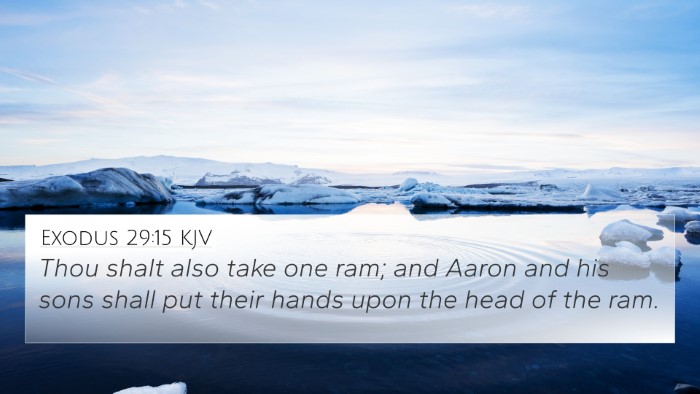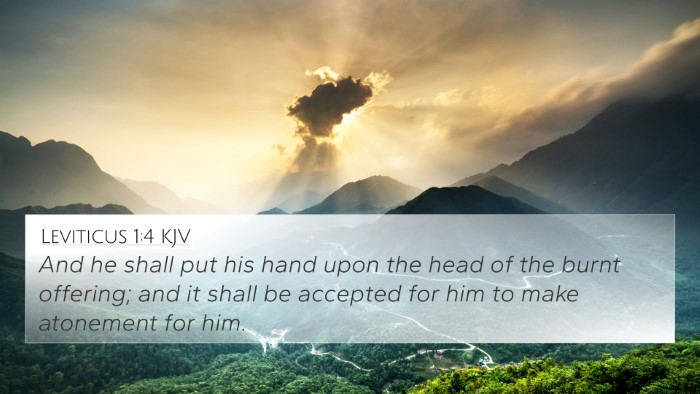Understanding Leviticus 8:18
Verse: Leviticus 8:18 states, "And he brought the ram for the burnt offering: and Aaron and his sons laid their hands upon the head of the ram." This verse is a key moment in the consecration of the priests, emphasizing the significant role of sacrifice and the imposition of hands.
Summary of Biblical Significance
This verse signifies the initiation of the priestly office through symbolic acts, which are essential in understanding the worship practices prescribed in the Old Testament.
Commentary Insights
- Matthew Henry:
Henry emphasizes the importance of the burnt offering, representing complete dedication to God. The laying on of hands symbolizes the transfer of responsibility and the need for atonement, illustrating the serious nature of the priest's calling.
- Albert Barnes:
Barnes highlights the physical act of laying hands as a means of identification with the animal being sacrificed. This act signifies the transfer of guilt and the acknowledgment of sin, pivotal for understanding the sacrificial system and its purpose.
- Adam Clarke:
Clarke notes the ritual's importance in setting apart Aaron and his sons for their sacred duties. The ram symbolizes the need for a substitute in atonement, reinforcing the theme of sacrifice prevalent throughout the Levitical code.
Key Themes in Leviticus 8:18
- Consecration: This act signifies the divine appointment and purification of the priests.
- Sacrifice: The ram represents the ultimate sacrifice, pointing to the deeper themes of atonement in Scripture.
- Atonement: The laying on of hands exemplifies the principle of substitution, which is central to the sacrificial system.
Cross-References to Leviticus 8:18
Understanding the connections between Bible verses enhances our comprehension of the Scripture. Here are several relevant cross-references:
- Exodus 29:10-14 - Details on the sacrifices for consecration.
- Hebrews 5:4-6 - Discusses the priestly order and God's calling.
- Isaiah 53:6 - The theme of the Lamb bearing our iniquities.
- Romans 12:1 - Calls for believers to offer themselves as living sacrifices.
- 1 Peter 2:9 - Describes believers as a royal priesthood.
- Leviticus 1:3 - Speaks to the burnt offering as a pleasing aroma to God.
- 1 Timothy 2:5 - The connection of Christ as the mediator who fulfills the role of high priest.
Connections Between Bible Verses
Thematic connections within Scripture can be found by studying how the principles in Leviticus 8:18 correlate with other verses. A study of the sacrificial system provides valuable insights into the nature of God and His requirements for holiness:
- The imposition of hands indicates a personal connection with God through the sacrificial process.
- The New Testament presents Jesus as the ultimate sacrifice, fulfilling the Levitical codes.
- Developing an understanding of the Old Testament sacrifices is vital to interpret Christ’s sacrificial death more profoundly.
Comparative Bible Verse Analysis
This study reveals that many of the rituals in Leviticus were types and shadows pointing towards Christ. The connection between Leviticus 8:18 and New Testament teachings shows the fulfilment of the law through Christ's sacrifice:
- Hebrews 10:1-4: Discusses the insufficiency of animal sacrifices compared to Christ's ultimate sacrifice.
- Colossians 2:17: References the Old Covenant's rituals as shadows of what is to come in Christ.
- John 1:29: Points to Jesus as the Lamb of God, fulfilling the sacrificial system.
Tools for Bible Cross-Referencing
For those seeking deeper insights into connections between scriptures, utilizing a Bible cross-reference guide or Bible concordance can enhance understanding of the links and contextual meanings within the Word of God.
Conclusion
Leviticus 8:18 serves as a profound verse that combines the themes of consecration, sacrifice, and atonement, leading us to understand more about Christ's ultimate role in God's plan. As we explore connections between Bible verses, we find our understanding deepening and our faith enriched.
